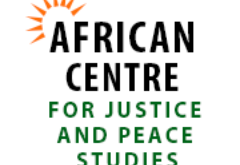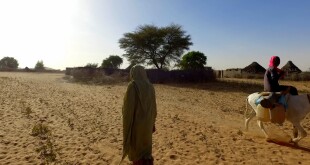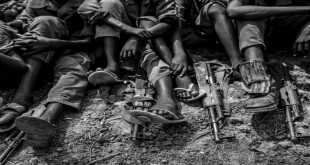(24 September 2013) On 19 September police in Nyala, South Darfur shot and killed two children and one adult at a protest outside the South Darfur Government offices. The African Centre for Justice and Peace Studies (ACJPS) condemns the excessive use of force and calls for an immediate investigation with promptly published findings.
The protestors had gathered after attending a funeral for two Zaghawa men who had been killed by an unidentified militia group the previous day.
Militia group attack civilians in Nyala
At 6.30pm on 19 August five heavily armed members of an unidentified militia group shot three male civilians on Al Congo street, Nyala, South Darfur. Two of the men were killed and the third man was severely injured. The three men, all from the same family, are members of the Zaghawa ethnic group:
- Ismail Ibrahim Wadi, (m), a prominent businessman and community leader, 55 years of age. Mr. Wadi died at the scene.
- Mohamed Yagoub Ismail, (m), accountant, 26 years of age. Mr. Ismail is the nephew of Mr. Wadi and died at the scene.
- Muzmil Ismail Ibrahim, (m), 22 years of age. Mr. Ibrahim is the son of Mr. Wadi. Mr. Ibrahim survived the attack and was taken to Nyala hospital.
The perpetrators of the attack were driving a Toyota Land Cruiser and were armed with Kalashnikov rifles. They were reportedly wearing light brown uniforms similar to the uniform worn by Sudan’s National Intelligence and Security Services (NISS).
The following day, a funeral was held for Ismail Ibrahim Wadi and Mohamed Yagoub Ismail. When the South Darfur Governor, Adam Mahmoud Jar Al-Nabi, attempted to attend the funeral, the family of the victims refused to let him enter, calling for his resignation and reportedly blaming him for the general insecurity in South Darfur and his failure to protect civilians.
Violent dispersal of protest
After the conclusion of the ceremony, many of the relatives and other residents of Nyala went to the South Darfur Government offices to protest the generalised climate of insecurity in the region, and demand compensation for the families of the victims. The protestors called for the Governor’s resignation and the fall of the regime. The Governor and his cabinet refused to meet with the protestors.
A group of protestors set fire to the Governor’s car and the fire spread to six other cars in the compound. Police were deployed and fired tear gas into the compound. When protestors attempted to flee, police fired live ammunition into the crowd, killing three protestors. Two of them are minors. Their names are below:
- Wali Eldein Abdulhadi Morsal, (m), 11 years of age, student.
- Manal Abdulrahman Hamid Omer, (f), 12 years of age, student.
- Mohamed Zakaria, (m), 25 years of age.
Eighteen other civilians were injured. Six remain at Nyala Hospital.
On 20 September Governor Al-Nabi declared a three day curfew in Nyala town between 6pm and 7am.
ACJPS calls on the Government of Sudan to order a prompt, independent, and impartial investigation into the incidents in Nyala on 18 and 19 September and ensure that the findings are published within a clear timeframe and that perpetrators are held accountable.
Local sources have speculated that the attack on the three Zaghawa men was aimed at weakening the support to armed opposition groups in the region. The three men were known wealthy members of the Zaghawa community, from which the leadership of the Justice and Equality Movement and the Mini Minnawi faction of the Sudan Liberation Army, two of Sudan’s armed opposition groups operating in Darfur, hails.
ACJPS calls on the Government of Sudan (GoS) to:
- Unequivocally and publicly condemn the excessive use of force by the police.
- Immediately disarm any militias operational in Nyala and elsewhere in Darfur, and put in place effective measures to protect civilians from violence;
- Immediately take steps to control the proliferation and availability of arms throughout Darfur, banning weapons in public places, and improve security and governance structures.
- Enforce stringent controls over the use of government vehicles and ammunition.
- Protect the injured victims of these recent incidents from further violence or reprisals and ensure they have access to appropriate medical services.
Background
The GoS has repeatedly failed to effectively investigate or publish the findings of committees of inquiry established to investigate similar excessive use of force by government forces and government-aligned militias against civilians. The findings of a committee established to investigate the deaths of twelve demonstrators, including ten children, following anti-regime demonstrations in Nyala in July 2012 have never been made public. The security situation in South Darfur has grown increasingly perilous in recent months.
In July 2013 ACJPS documented fighting between the Central Reserve Forces (CRF) and the NISS resulting in the death of one CRF officer and three NISS officers. Seven civilians were killed during the clashes owing to indiscriminate shelling. The cause of the fighting between the two government forces is not known but appears to have been ignited when a NISS patrol encountered armed CRF forces led by the former pro-government militia leader Mohamed Abdallah Sharara (nicknamed “Dakroum”) during the night and perceived that the CRF had breached NISS territory or control.
The security situation has become increasingly complex in Darfur with indications emerging that the GoS is losing its control over some government-aligned militia groups. The security situation has also been exacerbated by a surge in inter-ethnic fighting in which government forces have participated, an increase in banditry, and the lack of rule of law. General insecurity and armed clashes have spread to urban centres, including to the two principle cities of Darfur, El Fashir and Nyala, for the first time in the last ten years.
ACJPS considers that the recent surge of violence in the region underscores the pressing need for tightened restrictions on the use and supply of arms and ammunitions.
 African Centre for Justice and Peace Studies ACJPS | المركز الافريقي لدراسات العدالة و السلام
African Centre for Justice and Peace Studies ACJPS | المركز الافريقي لدراسات العدالة و السلام



